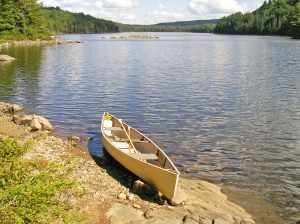Saving Precious Water: The Tilcon Precedent
The public trust in water should not be for sale.
August 16, 2018 at 03:01 PM
5 minute read
 A watershed decision is upon us and deserves our close attention if we are to preserve safe, clean drinking water for generations to come.
A watershed decision is upon us and deserves our close attention if we are to preserve safe, clean drinking water for generations to come.
In Connecticut, preserving the supply of high-quality drinking water by protection of adjacent open space has been embodied in law since Public Act 77-606 amended §25-32(b) of the General Statutes and added sections (c) and (d) to specifically require a “written permit” rather than “prior approval” for the disposition or use change in use of Class I and Class II land. Section 25-37(c) defines land owned by a water company as Class I, II or III. Class I and II land serves as a recharge region for a public drinking-water reservoir or well field, either directly or indirectly. For example, Class II land might abut a tributary stream to a distribution reservoir. Class III land is outside a drinking-water watershed and is lightly regulated.
The Regional Water Authority was formed from the New Haven Water Company, which dates back to 1849 and owned some 25,000 acres of land, mostly Class I and II—that is, mostly open space and mostly in the watershed of its drinking-water sources. Under the enabling legislation, the Department of Public Health was given authority to strictly regulate the sale, lease or any change of use of Class I or II land. Only minimal restrictions apply to Class III land.
For several decades, Class I and II lands were essentially untouchable. Almost any new activity required change-of-use approval, and normally such approvals were given only where the activity was in support of providing supply. The advantage for water companies was, and is, that sources protected by vegetated open space are typically of high quality, needing relatively little treatment. Protection of source-water lands was deemed so important that, in 2000, when a British company, Kelda, acquired Bridgeport Hydraulic Co., the state invested some $90 million to reinforce protections; the fear being that a foreign-owned company might not be subject to the relevant state law. (Kelda is now Aquarion and has been acquired by Eversource.)
Over the years, traditional protections for Class I and II lands have been difficult to maintain. Water use is down, and undisturbed land is a tempting asset to monetize. Strict interpretation of the law has been questioned; some publicly beneficial projects, such as clean-energy projects have been approved with conditions; and a few, relatively small projects have been approved with legislative exemptions. But despite the ever-increasing desire of water companies to squeeze additional revenue out of their real estate, protection of Class I and II lands has remained strong, and Connecticut continues to maintain an almost uniquely high standard for its potable-water sources. (Only Rhode Island has a similar standard.)
It is for this reason that a proposal by New Britain to lease 100 acres of its Class I and II lands to Tilcon Co. for rock mining caused policy shock when first proposed 10 years ago and revived in 2016. The current proposal is for 74 acres. While regulators were struggling with whether to approve projects such as a one-acre solar array on Class II land, Tilcon and New Britain were asking to wipe out an entire watershed, with the idea that after 40 to 50 years the empty hole could be made into a new reservoir. The DPH told the applicants that they would have to seek a change in the law, and in 2008 and 2016, legislation was indeed passed that required a study of the mining project, which study was never done.
Opposition to the project has been intense. The land at risk happens to be beautiful, ecologically rich and viewable from the popular Metacomet Trail. But, with respect to the policy impact, it would not matter if the land was unappealing. The foundational statutory responsibility of DPH and the state is to maintain the purity and adequacy of the public water supply. One can argue that this or that limited project on Class I or II land is consistent with that responsibility. But if the state were to say that stripping, blasting and excavating an entire source-water watershed can be done without impairing the purity and adequacy of the existing supply, there is virtually no conceivable activity that could be forbidden on protected land without flagrant inconsistency in interpreting the standards. The state's high-quality drinking water would be at serious risk, and the process of treating the water for public consumption would become more challenging and costly.
The statutes are clear, the public policy is evident, the future need and our responsibility to generations not yet born is unquestionable. The rule of law should apply, no matter how great the short-term economic interests may be. The public trust in water should not be for sale.
Margaret Miner is the executive director of Rivers Alliance of Connecticut.
This content has been archived. It is available through our partners, LexisNexis® and Bloomberg Law.
To view this content, please continue to their sites.
Not a Lexis Subscriber?
Subscribe Now
Not a Bloomberg Law Subscriber?
Subscribe Now
NOT FOR REPRINT
© 2025 ALM Global, LLC, All Rights Reserved. Request academic re-use from www.copyright.com. All other uses, submit a request to [email protected]. For more information visit Asset & Logo Licensing.
You Might Like
View All
ADVANCE Act Offers Conn. Opportunity to Enhance Carbon-Free Energy and Improve Reliability With Advanced Nuclear Technologies

Trending Stories
Who Got The Work
J. Brugh Lower of Gibbons has entered an appearance for industrial equipment supplier Devco Corporation in a pending trademark infringement lawsuit. The suit, accusing the defendant of selling knock-off Graco products, was filed Dec. 18 in New Jersey District Court by Rivkin Radler on behalf of Graco Inc. and Graco Minnesota. The case, assigned to U.S. District Judge Zahid N. Quraishi, is 3:24-cv-11294, Graco Inc. et al v. Devco Corporation.
Who Got The Work
Rebecca Maller-Stein and Kent A. Yalowitz of Arnold & Porter Kaye Scholer have entered their appearances for Hanaco Venture Capital and its executives, Lior Prosor and David Frankel, in a pending securities lawsuit. The action, filed on Dec. 24 in New York Southern District Court by Zell, Aron & Co. on behalf of Goldeneye Advisors, accuses the defendants of negligently and fraudulently managing the plaintiff's $1 million investment. The case, assigned to U.S. District Judge Vernon S. Broderick, is 1:24-cv-09918, Goldeneye Advisors, LLC v. Hanaco Venture Capital, Ltd. et al.
Who Got The Work
Attorneys from A&O Shearman has stepped in as defense counsel for Toronto-Dominion Bank and other defendants in a pending securities class action. The suit, filed Dec. 11 in New York Southern District Court by Bleichmar Fonti & Auld, accuses the defendants of concealing the bank's 'pervasive' deficiencies in regards to its compliance with the Bank Secrecy Act and the quality of its anti-money laundering controls. The case, assigned to U.S. District Judge Arun Subramanian, is 1:24-cv-09445, Gonzalez v. The Toronto-Dominion Bank et al.
Who Got The Work
Crown Castle International, a Pennsylvania company providing shared communications infrastructure, has turned to Luke D. Wolf of Gordon Rees Scully Mansukhani to fend off a pending breach-of-contract lawsuit. The court action, filed Nov. 25 in Michigan Eastern District Court by Hooper Hathaway PC on behalf of The Town Residences LLC, accuses Crown Castle of failing to transfer approximately $30,000 in utility payments from T-Mobile in breach of a roof-top lease and assignment agreement. The case, assigned to U.S. District Judge Susan K. Declercq, is 2:24-cv-13131, The Town Residences LLC v. T-Mobile US, Inc. et al.
Who Got The Work
Wilfred P. Coronato and Daniel M. Schwartz of McCarter & English have stepped in as defense counsel to Electrolux Home Products Inc. in a pending product liability lawsuit. The court action, filed Nov. 26 in New York Eastern District Court by Poulos Lopiccolo PC and Nagel Rice LLP on behalf of David Stern, alleges that the defendant's refrigerators’ drawers and shelving repeatedly break and fall apart within months after purchase. The case, assigned to U.S. District Judge Joan M. Azrack, is 2:24-cv-08204, Stern v. Electrolux Home Products, Inc.
Featured Firms
Law Offices of Gary Martin Hays & Associates, P.C.
(470) 294-1674
Law Offices of Mark E. Salomone
(857) 444-6468
Smith & Hassler
(713) 739-1250












